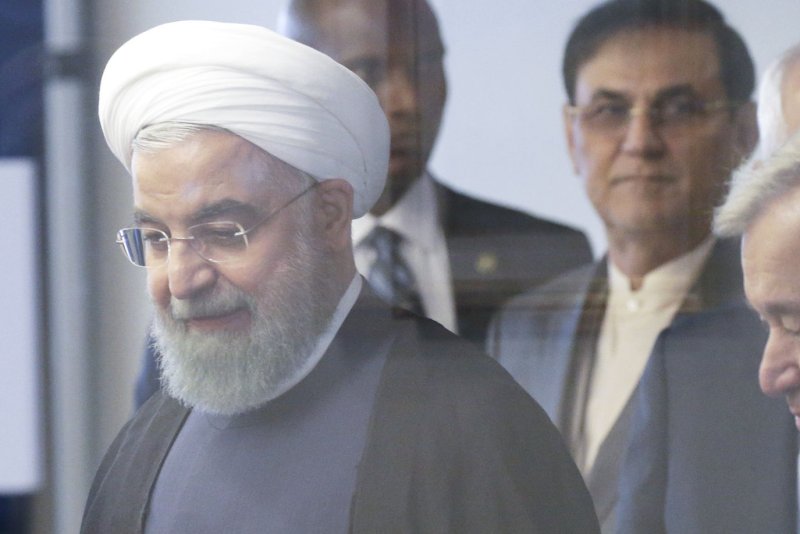The economy under Iranian President Hassan Rouhani is coping well with lower crude oil prices, the International Monetary Fund said. Photo by John Angelillo/UPI |
License Photo
Nov. 15 (UPI) -- Tax revenue generated from the sale of crude oil and oil products increased more than 80 percent from last year, the Central Bank of Iran reported Wednesday.
The bank reported total tax revenues during the six months of the Iranian calendar year, which began March 21, was $15.9 billion, down about 3.6 percent from the same period last year. Total expenses, meanwhile, were up more than 13 percent from last year.
Campaigning for a second term in office earlier this year, Iranian President Hassan Rouhani said easing international sanctions and addressing a high rate of inflation were national priorities. As easing sanctions make it somewhere easier to do business in Iran, Rouhani boasted after the elections that banking channels to the world could be opening up.
An October report from the International Monetary Fund said the economic conditions in Iran are improving, growth in gross domestic product has rebounded "strongly" and oil production and exports are at historic levels, helping Iran cope with relatively low global crude oil prices.
The Iranian Central Bank reported total tax receipts from crude oil and oil products over the last six months were up by more than 50 percent from the same period last year.
Iran has been able to capitalize on the gains in the global crude oil market. Its heavy benchmark for the price of oil gained 3.9 percent from October. Economists at the Organization of Petroleum Exporting Countries said GDP in Iran grew 16 percent year-over-year in the first quarter. Crude oil exports over the same period increased 30 percent.
OPEC reported total Iranian crude oil production for October at 3.8 million barrels per day, relatively stable for the year but 8.7 percent higher than the average for 2017.
From a production standpoint, Joe McMonigle, a senior energy analyst at Hedgeye Risk Management, told UPI last month that Iran has probably peaked in terms of what it can do by itself. In order for Iran to produce more, it will need support from Western investors, something he said would be difficult given pressures from Washington.















